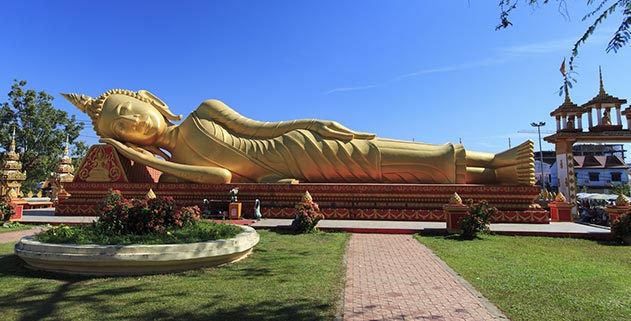 Several thousands among the Australian retiring population are departing from the traditional lifestyle of retirement years. Instead of living a modest life in the cities or just-about-decent life in the suburbs, they are migrating to South East Asia. While a few of them are looking for a cultural crossover and diversity of adventure, a majority is certainly looking at low cost of living in South East Asia as a major plus- one that can give their retirement savings longer legs.
Several thousands among the Australian retiring population are departing from the traditional lifestyle of retirement years. Instead of living a modest life in the cities or just-about-decent life in the suburbs, they are migrating to South East Asia. While a few of them are looking for a cultural crossover and diversity of adventure, a majority is certainly looking at low cost of living in South East Asia as a major plus- one that can give their retirement savings longer legs.
In this article we compare the cost of retirement living in Australia and retiring overseas in 8 countries spread across Asia (6 of them in South East Asia). We also look at the biggest threats to your ambitions of retiring overseas.
Retiring in Australia

But before jumping into the retirement alternatives of South East Asia, a word on the Australian retirees. The Baby Boomer generation was the first to witness real economic growth and availed many mores of comfort which were not heard of. Swayed by the times they lived in (the euphoria of the post World War II era), they fell into the trap of a flamboyant lifestyle that came at the cost of a depleted retirement nest egg. Not that they bothered about the future too much! Yet, this attitude has come to bite them today and in absence of any solid retirement planning, many are finding themselves badly underfunded.
For retiring modestly at 65, a single person requires $23,800 annually and a couple needs around $34,300 (as estimated by the Association of Superannuation Funds of Australia). The AFSI further says that for a comfortable lifestyle in Australia a single person may need $42,500 and a couple, $58,400 per year. This is far from what the majority of the retiring generation can afford long-term.
A look at the average retiree

To define, a comfortable retirement includes scope for indulging in recreational activities, private health insurance, purchase of household goods, smart clothes, decent car, energy-star rated electronic equipment and travelling.
As mentioned above, a couple needs $58,400 to retire comfortably. This translates to $4,866 per month. The average Australian retiring couple does not possess this kind of money. According to the AMP Retirement Adequacy Index for May 2013, the average balance for 60-64 year old men during retirement is $85,000. For women, this figure is even less- merely $58,000.
A retiring couple needs $2,800 a month to barely scrape through (AFSA Data). We are talking about a very cut-back lifestyle here. So yes, you can ride a bike and hold hands together. But forget about dining out, holidays abroad, a nice car and paid help at home. Frugality will be the name of the game.
Retiring in luxury – elsewhere

So you can either choose to live very modestly with this kind of money or opt for an extremely comfortable retirement at many of the South East Asian destinations. Let us put things in perspective. For a shade above $1,800, you can rent a villa with a view of the ocean in South East Asia, eat organically produced fresh vegetables and afford excellent health care, health insurance, and small luxuries here and there. In other words, what can barely provide you sustenance in Australia can give you the purchasing power to live a comfortable life post retirement in Asia. And this is why Asia is kicking such a positive storm among the retirees of the developed nations.
Living in Asia
Living in Asia and South East Asia in particular is easier than you may be ready to believe. If you shed the baggage of prejudice and look forward to seeing Asia with the glasses of experience rather than age-old notions, you will only revel in what you see. For instance, what is the first stereotype that comes into your mind when you think of India? It is that India is the land of snake charmers. Yet, read a little and you will find that it is also the land of top scientists, art lovers, business tycoons, Miss Universes/Worlds and a development-savvy team at the political centre.
Similarly, you have to shun the stereotype which talks of, say, Thailand as a country of girlie bars and blokes and Cambodia as a politically-doomed country boiling with communal unrest. Once you are ready to acknowledge that Asia is not a continent like Conrad’s Africa and it is also growing at a magical pace (Even the West cannot ape the growth of China, for example), you will have warmed yourself up to what could be the opportunity of a lifetime.
Yes, there are some serious distance considerations to retiring overseas. However, this can only bother those retirees who want to constantly hop over from Australia to the East and vice versa. Moreover, much of Asia is so well connected through air routes that you won’t find multiple flights or stopovers troubling you much.
Cost of living
 For $2,000 a month, you can live a princely life in Thailand’s Chiang Mai.
For $2,000 a month, you can live a princely life in Thailand’s Chiang Mai.
The expat community is thriving, the local population amicable, the atmosphere redeeming and the old-world charm a big pull in itself. This is the story of many more parts of Asia. It is not to say that the continent is filled with thousands of retirement options but one can certainly put his neck on the line and say that if you are willing to search for retiring overseas options, you will find at least a dozen real pearls.
Think of Malaysia for instance. You can live in a high-rise that replicates Sydney or Miami but pay a monthly rent which does not even cover the weekly rent of these places. And Cambodia….what to talk of it? Yes, admitted that it is not for the traditionally bent and only those with an adventure-bent can take a chance with it but with hundreds of entrepreneurial prospects, really low cost of living, and a friendly population, it is a chance you will not mind taking.
There are a few who feel that exotic looks good as a one-off dish and not as a regular feature and Asia has exotic written all over it. This is a false notion. If you explore deeper you will find that there is a commonplace theme running through Asia and the exotic blends into it like a side-stroke. Put another way, Asia is not an exotic-istan.
And you don’t need to be really well off to enjoy your life here. This fact cannot be overstated. Moreover, the good news is that many sleeping parts of Asia are just beginning to join the feast. As an example, think of Kampong Saom in Cambodia. It was a nothing place with almost ancient leanings. It could never offer much to the Western or the Australian retirees.
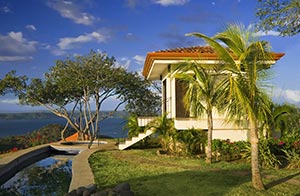 Once it became a part (province) of Preah Sihanouk in the year 2009, its whole appearance changed. Today, 6 years later, and after the recent development and issuance of land titles, it can soak in any kind of a crowd without giving the impression of “not fitting in”. The same is the story of many just-joined-the-party places of Asia (specifically South East Asia).
Once it became a part (province) of Preah Sihanouk in the year 2009, its whole appearance changed. Today, 6 years later, and after the recent development and issuance of land titles, it can soak in any kind of a crowd without giving the impression of “not fitting in”. The same is the story of many just-joined-the-party places of Asia (specifically South East Asia).
Ask freelance writers working in the region 6 years ago and they will tell you that the place where work was only possible from the internet cafes is suddenly offering terrific Wi-Fi connection and optic fibre cable lines.
The world after the GFC is no more what it used to be. The change, whether it is for the better or for the worse will take some years to examine. Presently, we are too tightly bound to it, a participant rather than an observer. What we can still make out is the fact that the last half a decade has been one hell of a roller-coaster ride.
Job avenues have squeezed, businesses have shut down operations suddenly enough, government pensions have been tampered with, Super fund balances look insufficient, and the dream of a peaceful retirement has seemed just that- a dream.
This big population of retirees (and with the Baby Boomer population set to quit, all in one go, we are looking at a never-before retired population) has to reconsider its retirement alternatives. And this is where Asia kicks in. A beautiful rescue for many who need being rescued!
Low labour cost and low cost of transport

Cost of labour is soaring in Northern Europe, America and Australia. This is pushing cost of living upwards. In Asia, the total compensation costs (wages plus hidden costs) add up to a very nominal amount when compared to these developed nations. Even when adjusted for inflation, this amount is very meagre and is a major reason for the low cost of living in South East Asia.
The cost of transport is equally low. By western yardsticks, air, bus, and rail are pretty cheap and this contributes a lot if you look into what you can save monthly because of the inexpensive modes of transport.
Diversity
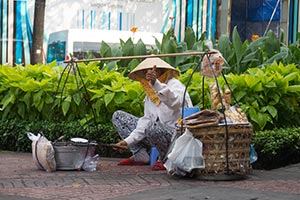 Southeast Asia is among the most diverse regions of the planet. Its spread in terms of national boundaries, faiths, religions, ethnicity, culture and rituals is very vast. It is that socially polite zone of earth where the small gestures of kindness are not lost on us. Not all the countries of South East Asia can be referred to as tolerant but the region is only very rarely associated with communal uprisings. For Australians retiring overseas in South East Asia, it is great news that the Australian dollar travels a long way here. Food, utilities, rent and grocery is cheap enough, people are warm and strangely still awed by the foreign presence.
Southeast Asia is among the most diverse regions of the planet. Its spread in terms of national boundaries, faiths, religions, ethnicity, culture and rituals is very vast. It is that socially polite zone of earth where the small gestures of kindness are not lost on us. Not all the countries of South East Asia can be referred to as tolerant but the region is only very rarely associated with communal uprisings. For Australians retiring overseas in South East Asia, it is great news that the Australian dollar travels a long way here. Food, utilities, rent and grocery is cheap enough, people are warm and strangely still awed by the foreign presence.
Asian culture

In Asia, you may experience a culture shock to begin with. Except Japan, punctuality is not a virtue Asians swear by. There can be some confusion regarding suddenly cancelled mode of transport. You may feel you are paying for a service you believed to be free. You may be confounded by what’s going on in general. The food can be too spicy for comfort, bugs can bother you, the air may initially feel suffocating (at any rate filled with many new odours) and the languages difficult to understand.
But once you dig deep into your traveller’s (and now resident’s) reserve, you will begin to warm up to the proposition of this new culture. Asia is another world experience for the citizens of the developed nations and the price at which such an experience can be gained is next to nothing. $40 can carry you through a day even if you insert a semblance of luxury into it.
Political stability

Highly vocal protests in Thailand a few years ago proved to be a big turn-off for the retirees of developed nations. However, such protests, one would do well to remember, are limited to only a few pockets of the country. Political unrest is a reflection of crack in the social or the political structure and hence it is quite possible in still developing nations where political or social forces have not reached stability yet. There was unending turmoil in Asia in the 60s. Such strife included, but was not limited to, Vietnam War, military coups, insurgencies and revolutions. Those retiring overseas did not see Asia as an option back then. Things have changed quite a bit since that time in the past. Asia has been very peaceful over the last couple of decades; an evidence that it is coming of age.
Crime rate

In regards to crime rate, there is a consensus among westerners that residents feel much safer in the streets of Asia. It is not to say that crime does not rear its ugly head here but in comparison to the west it is less frequent. Further, Asia disallows the ownership of weapon and hence spur-of-the-moment violence does not usually end up the way it does in the West or Australia. Just as an instance, Residents in Asia, in absence of a weapon, would not be able to commit what the South African athlete Oscar Pistorius did.
The best retirement options in Asia
I have compiled a list of 8 countries of Asia, 6 of them belonging to South East Asia, in an attempt to give you a concise picture of the retirement opportunities at hand. Here we go.
1. Retiring in Thailand
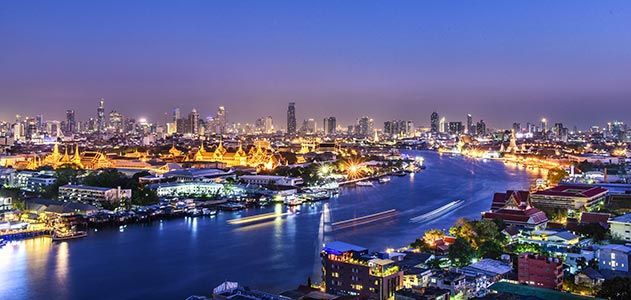 The price of renting a 3 bedroom apartment in a decent neighbourhood of Thailand is $A 1,513 which is 50% lesser than the cost you may incur in Australia. The cost of purchasing a square metre of apartment in the city centre is $A 3,378. This figure is $A 8,520 for Australia. A couple can retire comfortably, even luxuriously, in Bangkok for $A 22,652 annually. Contrarily, they may need $58,400 for availing a comfortable retirement in Australia.
The price of renting a 3 bedroom apartment in a decent neighbourhood of Thailand is $A 1,513 which is 50% lesser than the cost you may incur in Australia. The cost of purchasing a square metre of apartment in the city centre is $A 3,378. This figure is $A 8,520 for Australia. A couple can retire comfortably, even luxuriously, in Bangkok for $A 22,652 annually. Contrarily, they may need $58,400 for availing a comfortable retirement in Australia.
Expats seeking adventure, escapades and a fair dose of western facilities and amenities find Thailand a joy to live. The culture is embracing and really fascinating; two adjectives that immediately come to mind. The food is a treat to the palate and the climate, despite its tropical inconsistency, can be really moderate and good for the body (of course, after you escape the initial days of body-adjustment).
Thailand is among the more developed nations of South East Asia and it can look relatively expensive when compared to Philippines, Indonesia, or Cambodia. Yet, compared to the developed nations across Northern Europe, America and Australia, the price structure seems pretty frugal; what with noodle bowl from the street food stalls costing less than a dollar and a sumptuous three-course meal at an upscale restaurant costing $A 85 (which includes drinks for two).
The population of expatriates is quite high in Thailand and English is spoken all around the major cities. With Bangkok as the fulcrum, you can revolve round the beaches in the south and mountains in the north. Thailand is the core hub of South East Asia and the whole territory seems to unfurl right through it.
Chiang Mai Thailand
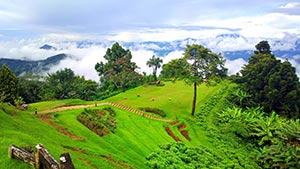 If you thought Bangkok was the only city attracting retirees, think again. Take the instance of the city of Chiang Mai. It has an expat population of 40,000. They have been sourced from diverse countries across the planet and the entire fraternity lives amicably; something which is the true reflection of the state of the city- peaceful and amicable. In fact, there are several polls which suggest that Chiang Mai is among the most livable places on the Asian landscape.
If you thought Bangkok was the only city attracting retirees, think again. Take the instance of the city of Chiang Mai. It has an expat population of 40,000. They have been sourced from diverse countries across the planet and the entire fraternity lives amicably; something which is the true reflection of the state of the city- peaceful and amicable. In fact, there are several polls which suggest that Chiang Mai is among the most livable places on the Asian landscape.
Foreigners living here are quick to talk about the advantages of the city. The lifestyle, if nothing, is very relaxed. The rate of crime is pretty low, winters are cool and medical care, to quote them, is just short of excellent. The cost of living is low enough and there are just so many activities to dig one’s teeth into. There is an interesting blog on the Huffington Post that says Chiang Mai, open to argument, is the cheapest place on the planet to live well. Why won’t the expats trumpet the fact that they can live like princes for a sum of $A 2,500; a price which can just about fetch a decent post-retirement life in Australia or some other developed country?
Moving up from the capital city, one can witness construction happening at a frenzied pace. The boom phase of the housing cycle caters really well to the expatriates. What it also does is open up a pretty wide range of rentals and buying options. The retirement communities have also boarded the expat bus and are offering retirement resorts at easily affordable prices.
Just like it is with other parts of South East Asia, foreigners have to make do with condo purchases in a situation where they cannot own land owing to stringent government regulations (one major drawback of retiring overseas). This, however, is a practical option and gives retirees an investment option that can garner them a handsome capital gain on a latter day. Of course, the retirees do not go into all this. For them, a luxury condo available for a not-stiff-at-all price opens them to a beautiful living alternative. To put it in exact words, it is like their retirement dream coming true.
The economy of Thailand is centred on its freshly industrialised framework. The manufacturing, automotive and finance sector is getting a pull upwards. The economic output has enhanced multifold and with it the quality of life has also become a lot better in this Asian den.
Places like Chiang Mai and Phuket offer diametrically opposite alternatives of sea and mountain. Expats find the finance sector well suited to meet their retirement objectives. The air routes are very well-connected. The retirement visa scheme promotes tourism and permanent residency. In fact, anyone who has seen more than 50 summers in life and has sufficient savings can settle down in Thailand for the entire length of his or her retirement life. All that needs being done is attending visa check-ins at a frequency of three months.
There is a notion in minds of foreigners that Thailand is place for easy sex. This, in a way, maligns all the offerings that Thailand has to make. Just as Amsterdam is not only about sex booths, Thailand bestows on us a lot more than blokes, girlie bars and sexual escapades. The Thailand, other than this stereotypical image, offers a wealth of activity and fun in the shape of book clubs, theatre and a lot more. If you are looking for variety and Paris is beyond your financial muscle and Columbia or Mexico beyond your geographical reach, take a shot at Thailand. You owe it to your retirement years.
2. Retiring overseas in Malaysia
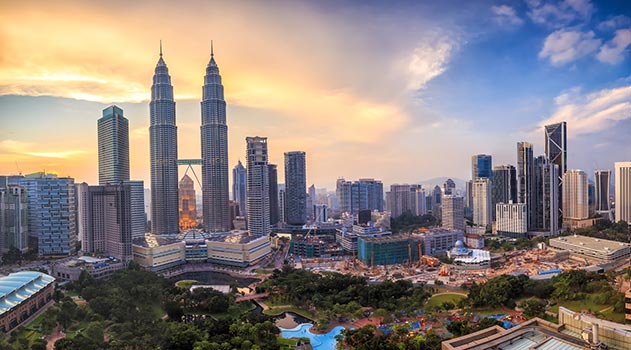 Malaysia, lying south of Thailand, is another hotspot for foreigners willing to settle down overseas in their post-retirement days. It does lack a bit in sheer tourist appeal but the Muslim nation amply compensates for it with its buoyant economy and robust commercial skeleton.
Malaysia, lying south of Thailand, is another hotspot for foreigners willing to settle down overseas in their post-retirement days. It does lack a bit in sheer tourist appeal but the Muslim nation amply compensates for it with its buoyant economy and robust commercial skeleton.
You can rent out a 3 bedroom apartment in Kuala Lumpur for $A 933. The cost in Australia for same kind of rental is 240% higher. The cost of purchasing an apartment near city centre will be $A 2,780 compared to $A 8,520 that it may cost you in Australia (average) for every square metre. A retired couple can eke out comfortable living for themselves for something like $A 18,480 annually. This is 31.6% of money needed in Australia.
North Americans are still apprehensive towards Malaysia given the chances of political and communal unrest in the country but the Australians are warming up to this alternative and they cannot be blamed for the departure from trends; a few aspects of Malaysia are just so enticing. Malaysia is not just another country. It can be used as a fulcrum for connecting with the greater Asian landscape.
There are virgin islands, thriving cities, rainforests with mountainous backdrop, and excursion activities like yachting and diving. It has a multi-cultural layout and this quality is especially endearing to the foreigners. Those retiring often seek a life different to the one they have lived. It is inherent human nature not to seek uniformity with their long-working life in their retirement years. This is one reason why South East Asia in general and Malaysia in particular appeals to them. It is not that there is any shortage of pastoral lands full of a sense of idyll in Australia but the underfunded retirees cannot afford such places (either on rent or as a buying option). If they are retiring overseas in Malaysia, they can get such a dream retirement for a lot less.
Now, if you add the exotic nature of the place, the low cost of living, the amicable environment and easily affordable food, transportation and health care, you are looking at a country which expats are only too willing to embrace. The cities most often looked forward to are Kuala Lampur, Langkawi or Penang. Trivia- Petronas Tower in Penang was the tallest tower in the world for quite some time.
Those Australian retirees who find the skyrocketing cost of living in the cities too much to contend with either make a move towards the suburb or are relocating to Asia. The former is not giving them enough respite but the latter is allowing them a extremely comfortable lifestyle without the constant fear of outlasting their savings.
There are plenty of inexpensive restaurants- funnily a lot of them work through hawker stands- which offer not only quality local cuisine but also international gastronomic delicacies. Just as it is with food, it is with healthcare, too. Across the length and breadth of Malaysia, the healthcare is superb. Malaysia is generally referred as “Asia-easy”. The tax structure, it needs being pointed out, is friendly and lifestyle is laid-back (yet enterprising). And it is in this regard that I want to sound out a warning, but that, a little later.
Penang Island Malaysia
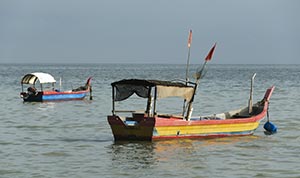 Those who are seeking a dynamic place should not be looking beyond Penang. It is only remotely congested and reminiscent of Australia in this respect. The legacy of British colonialism has left an indelible impact and the place is studded with shop-houses, galleries, boutique hotels, cafes and restaurants.
Those who are seeking a dynamic place should not be looking beyond Penang. It is only remotely congested and reminiscent of Australia in this respect. The legacy of British colonialism has left an indelible impact and the place is studded with shop-houses, galleries, boutique hotels, cafes and restaurants.
There is a unique benefit offered to retirees from foreign origin. It is called My Second Home Program. It is worth remembering though that vacationing somewhere and permanently settling down in the same place are two absolutely different propositions and hence Due Diligence and immaculate research is necessary.
3. Retiring in Indonesia
 If you feel that you are underfunded to invest in a comfortable retirement in Australia you can construct a Balinese style home for yourself in the heart of Indonesia and add themes like landscaped lawns and inground pools to it. What more, you can have a small fleet of staff and retire in luxury in the idyllic premise of Bali.
If you feel that you are underfunded to invest in a comfortable retirement in Australia you can construct a Balinese style home for yourself in the heart of Indonesia and add themes like landscaped lawns and inground pools to it. What more, you can have a small fleet of staff and retire in luxury in the idyllic premise of Bali.
There is no dearth of Vietnam veterans who have left the Australian or the American shores and settled permanently in Indonesia. Spread across the equator for approximately 5,000 kilometres, Indonesia offers a diverse cultural spread. Bali is an island in the Indonesian archipelago, a notable one along with other places like Sumatra, Papua, Kalimantan and Sulawesi, among the group of 17,000 islands. It tops the tourist charts and there is a big fraternity of those retiring overseas who are choosing Bali over other islands if they are making up their minds to live in Indonesia.
Bali Batak Houses
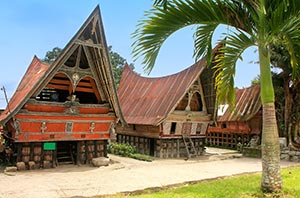 For Bali, the price to rent a 3 bedroom apartment in the vicinity of city centre will be roughly $A 893. Set against the steep 3,500 needed in Australia, the price seems really miniscule.
For Bali, the price to rent a 3 bedroom apartment in the vicinity of city centre will be roughly $A 893. Set against the steep 3,500 needed in Australia, the price seems really miniscule.
You will be pushed back by $A 2,366 (per square metre) if you look to buy an apartment in the central hub of the island. A retired couple can live comfortably in Vietnam for $A 15,947. For Australia, this figure is $58,400. Indonesia is fairly well spread across the equator and thus the prices may vary from region to region. Such variations however do not take away from the fact that the prices are peanut compared to Australia.
Jakarta, the capital city of Indonesia, is the gateway to its modern heart. The place wears its heart on its sleeve and you can feel contemporary western architecture jostling for identity amidst a good number of historic heritage buildings. Your eyes won’t escape the conventional Indonesian architecture even if you pass a cursory glance through them but the effect of Portuguese and Dutch influence will not be lost on you either if you are retiring overseas in Jakarta.
Bali, Indonesia’s most notable retirement destination, was chosen as one of the three places used by the female protagonist in the movie Eat, Pray, Love. Actually, the word most closely associated with Bali is none among eat, pray or love. It is ‘Heal’. Bali in particular and Indonesia in general can heal your heart and mind and give your underfunded finances enough leverage to retire decently. Yes, there can be political unrest from time to time and communalism can spread its tentacles but things do not go out of hand as a general trend.
Imagine this: West Jakarta has the best to offer and even its most affluent neighbourhoods do not come anywhere near in price to the real estate of a city like, say, Sydney (and why Sydney, even cities like Brisbane or the trailing Hobart or Darwin). This is the power of inflation and such disparity in cost of living is clearly manifest in Indonesia.
Indonesia is governed by stringent property regulations and foreigners cannot own land here. Instead, they can buy condos and apartments. Several overseas retirees are leasing land and constructing their houses on them. The only trap that lies in places like Bali is that those settling with a “permanent resident” mindset also give in to the lure of tourist leanings. And as it goes with tourists, they stop minding or tracking the expenses. Such tourist mindset can become your bane and pretty quickly at that because Bali can be a relatively expensive place for tourists.
The idea is to cook at home and save money in the process. After all, you cannot eat out for 14 years. In place of imported alcohol, you can settle for local brew; one for which you will have to develop taste with time. You can get local help for a very cheap price and you can afford to keep a fleet of servants running errands for you for next to nothing ($A 2.50 an hour). Added advantage is the fact that these staffs can also get you better bargains in the market.
4. Retiring in the Philippines
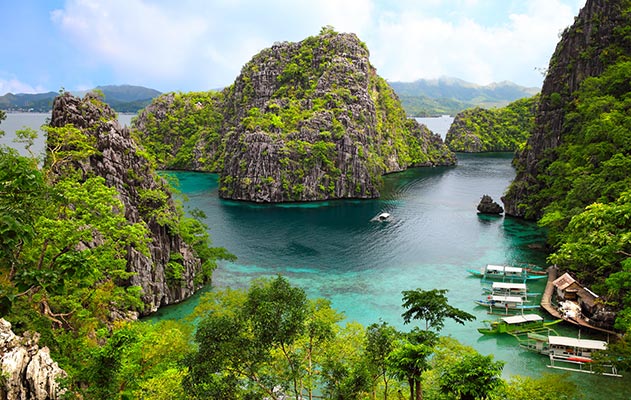 Philippines, an island nation parked on the eastern fringe of Thailand and Malaysia, has become a hotspot for western and southern retirees. A new trend has emerged where the kind of people who were stuck to Queenstown, Mexico city, Panama and Nicaragua for their retirement stay are setting their site on Philippines. The economy of Philippines is not as robust as, say, that of Thailand or even Malaysia but what it lacks in infrastructure and quality of living (in comparison to its neighbours to its west), it amply makes up with its all-encompassing offering. This island nation offers a thorough spread when it comes to a luxury retirement package.
Philippines, an island nation parked on the eastern fringe of Thailand and Malaysia, has become a hotspot for western and southern retirees. A new trend has emerged where the kind of people who were stuck to Queenstown, Mexico city, Panama and Nicaragua for their retirement stay are setting their site on Philippines. The economy of Philippines is not as robust as, say, that of Thailand or even Malaysia but what it lacks in infrastructure and quality of living (in comparison to its neighbours to its west), it amply makes up with its all-encompassing offering. This island nation offers a thorough spread when it comes to a luxury retirement package.
Manila, the capital city and the hub of Philippines, is quite affordable so you can figure out for yourself what the cost of living may be in other less developed areas. Where Manila offers a modern landscape, Cebu city offers a pastoral, old-world charm. Real estate in Philippines is much cheaper in comparison to Thailand and Malaysia so it is not hard to fathom that it does not come anywhere near the Australian property market prices.
Philippines does not possess the “hub status” conferred to Kuala Lumpur or Bangkok but nonetheless, it is quite well connected to various travel destinations across the planet. This said, it can still take some time for your loved ones to reach you or for you to reach them, given that there can be multiple flights and transition stops.
Cebu City Philippines
 You can rent out a 3 bedroom apartment in Cebu city for $A 528. This is only about 14% of the cost you may incur in Australia if you have similar ambitions. The cost of purchasing an apartment near city centre will be $A 2,081 compared to $A 8,520 that it may cost you in Australia (average) per square metre. A retired couple can eke out comfortable living for themselves for something like $A 19,554 annually. This figure sits at $58,400 for Australia.
You can rent out a 3 bedroom apartment in Cebu city for $A 528. This is only about 14% of the cost you may incur in Australia if you have similar ambitions. The cost of purchasing an apartment near city centre will be $A 2,081 compared to $A 8,520 that it may cost you in Australia (average) per square metre. A retired couple can eke out comfortable living for themselves for something like $A 19,554 annually. This figure sits at $58,400 for Australia.
While you are restricted from buying land in Philippines, the Philippines Condominium Act allows you to purchase condos. The government believes that buying a condo is not equivalent to purchasing the land on which it sits so there are no hassles in making such a purchase; and it really is a practical buying option.
5. Retiring in Cambodia
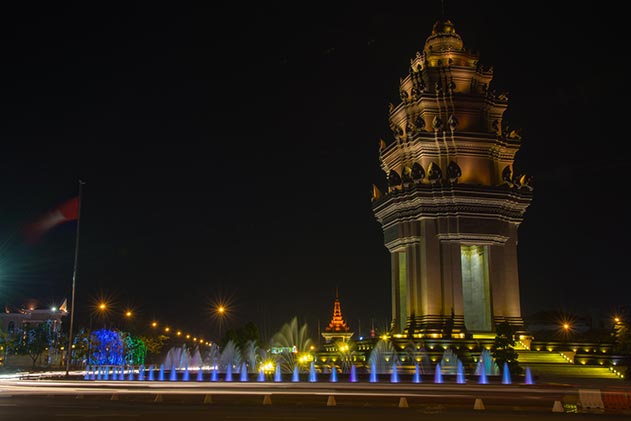 Cambodia, the Kingdom of Wonder, calls out to us in hushed up tones but it is not before long that it catches our imagination completely. Even if we are a tourist we can decipher the nomadic leanings of the place. The laid-back style of existence and the low cost of living tells us in no uncertain terms that it can be one hell of a place for retirees looking for a cheap and quiet overseas retirement. If you have worked all your life in places that wore a hectic, stressed out appearance. Phnom Penh will offer you a study in contrast. Yes, it might have been difficult calling Cambodia your home during the political unrest in the times of Saloth Sar (Pol Pot) but it is a peaceful country today- from within and without.
Cambodia, the Kingdom of Wonder, calls out to us in hushed up tones but it is not before long that it catches our imagination completely. Even if we are a tourist we can decipher the nomadic leanings of the place. The laid-back style of existence and the low cost of living tells us in no uncertain terms that it can be one hell of a place for retirees looking for a cheap and quiet overseas retirement. If you have worked all your life in places that wore a hectic, stressed out appearance. Phnom Penh will offer you a study in contrast. Yes, it might have been difficult calling Cambodia your home during the political unrest in the times of Saloth Sar (Pol Pot) but it is a peaceful country today- from within and without.
If you are retiring overseas to Cambodia, here is what you should know: The price of renting a 3 bedroom apartment in a decent neighbourhood of Cambodia is $A 1,175 and the price of purchasing a square metre of apartment in the city centre is $A 1,846. The former is $A 3,050 in Australia and the latter is $A 8,520 in Australia. A couple can put their feet up and retire comfortably, even luxuriously, in Phnom Penh for $A 16,879. This is 75 % lesser than what you may need in Australia.
Living in Phnom Penh
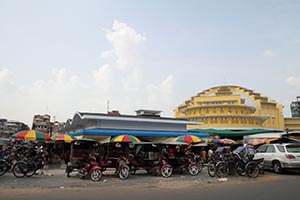 It is low cost of labour, primarily, which makes such low living cost economically sustainable for the whole country. Cambodia is quite lackadaisical when it comes to piling up stats about various things. For instance, no one can tell particularly how big the expat community in Phnom Penh is but there is a consensus that it is quite large. If you are looking to reside in Cambodia, a long-stay visa welcomes you. Different nationals can procure the year-long-visa for a modest cost of $300. It is a thick expat fraternity in Cambodia and it is not difficult for an Australian to find another here.
It is low cost of labour, primarily, which makes such low living cost economically sustainable for the whole country. Cambodia is quite lackadaisical when it comes to piling up stats about various things. For instance, no one can tell particularly how big the expat community in Phnom Penh is but there is a consensus that it is quite large. If you are looking to reside in Cambodia, a long-stay visa welcomes you. Different nationals can procure the year-long-visa for a modest cost of $300. It is a thick expat fraternity in Cambodia and it is not difficult for an Australian to find another here.
Cambodia, on first look, gives the impression of being a real foreign soil but it wins you and those who come to dominate it with their own lifestyle end up readily absorbing and accepting its way of living. It is a very easy country to move into. The transition can be completely painless. You can rent an apartment with a deposit of a month and lease it out for as less as three months without painstaking protocols.
6. Retiring in Vietnam
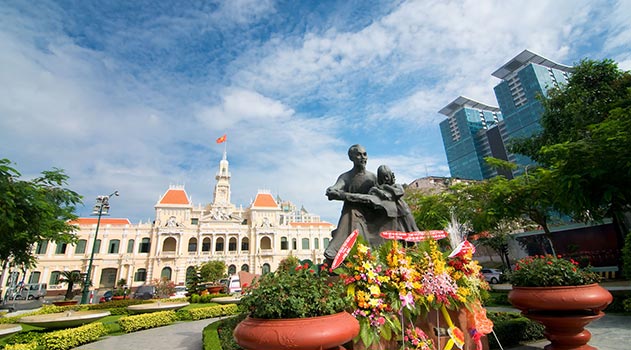 If you have been to Vietnam in the recent past you would have found the place enticing enough to harbour thoughts of moving there permanently after retirement. Vietnam has a great repute when it comes to its beaches. International Living’s Global Retirement Index ranks countries in their capacity as retirement destinations. Vietnam scored a 100 implying that its cost of living is lowest amongst all countries. This is open to speculation but what is not is the fact that Vietnam is up for grabs pretty cheaply.
If you have been to Vietnam in the recent past you would have found the place enticing enough to harbour thoughts of moving there permanently after retirement. Vietnam has a great repute when it comes to its beaches. International Living’s Global Retirement Index ranks countries in their capacity as retirement destinations. Vietnam scored a 100 implying that its cost of living is lowest amongst all countries. This is open to speculation but what is not is the fact that Vietnam is up for grabs pretty cheaply.
Expats can settle down in Vietnam and enjoy a comfortable retirement for about $16,879 annually. This cost is equated per couple. So, if you have $A 200,000 in your kitty, it will last you a better part of 12 years and remember that we are assuming costs on the higher side. If you are ready to slide down a little, you can make do with about $1,200 a month or about $14,400 a year which will mean that your money runs for 14 years.
Ho Chi Minh City
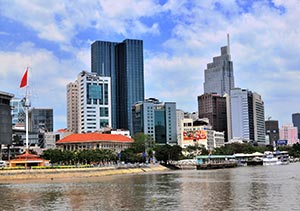 There is a decent number of dwelling approvals and subsequent dwelling commencements in Vietnam. The complexes include, but are not limited to, gymnasiums, laundries and swimming pools. For Ho Chi Minh City, the price to rent a 3 bedroom apartment in the vicinity of city centre will be close to $A 1,220 which is about 40% of what it may cost you in Australia. The price of buying an apartment near city centre will be $A 3,445 compared to $A 8,520 that it may cost you in Australia (average) per square metre. A retired couple can live comfortably in Vietnam for a little shy of $A 24,000. This is a pretty affordable bargain when you think of the figure $58,400 you are likely to spend in Australia for eking out a comfortable retirement.
There is a decent number of dwelling approvals and subsequent dwelling commencements in Vietnam. The complexes include, but are not limited to, gymnasiums, laundries and swimming pools. For Ho Chi Minh City, the price to rent a 3 bedroom apartment in the vicinity of city centre will be close to $A 1,220 which is about 40% of what it may cost you in Australia. The price of buying an apartment near city centre will be $A 3,445 compared to $A 8,520 that it may cost you in Australia (average) per square metre. A retired couple can live comfortably in Vietnam for a little shy of $A 24,000. This is a pretty affordable bargain when you think of the figure $58,400 you are likely to spend in Australia for eking out a comfortable retirement.
As it happens everywhere else, you will find the prices dipping as you move out of the city centre area towards the outer realm. Food in Vietnam, there is a popular consensus, is of very high quality. The delectable spread of food caters to the French palate in the North (Hanoi) and the American palate in the South (Ho Chi Minh City).
Among the many other advantages of choosing Vietnam as your retirement destination, the fact that the Vietnamese are decent with English is certainly one. While there is a tendency amongst the older gentry to tilt towards French, the younger lot is getting their teeth into English, it being a mandatory course in schools. Australians do not have to worry about learning a wholly new language and in absence of such language barrier; Vietnamese retirement can give the impression of a smooth transition.
Today, we live longer lives thanks to higher life expectancy. A longer life is generally good news but it also means that even a sum of $200,000 may not suffice. However, if it stands a decent chance of outlasting you, it is in places like Vietnam. If you have planned an investment strategy for yourself, there is a good chance that you can last out with your $200,000 and the additional sum derived from investment earnings.
Before settling down in Vietnam, it may be handy to spend some quality time there as a tourist. During such prolonged stays, you can gain foothold as a resident and gain a perspective that will hold you in good stead if you choose to retire permanently. Also, there can be tax conundrums lying along the way. Every country treats money and taxes imposable on it differently. It may then pay to consult your tax accountants and attorneys before making a permanent move.
7. Retiring in Nepal
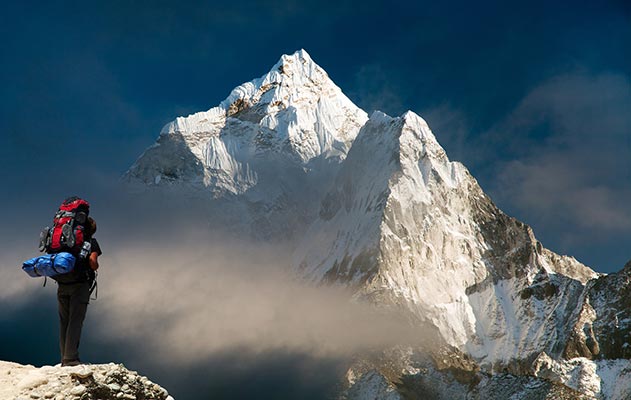 Renting out a 3 bedroom apartment in Kathmandu can set you back by $A 252. The good news is that this is abysmally lower than what you would spend in Australia so even the recently weakened Australian dollar does go some distance. The cost of purchasing an apartment near city centre will be $A 1,177 compared to $A 8,520 that it may cost you in Australia (average) per square metre. A retired couple can live comfortably with an undertone of luxury for $A 12,914 annually. This figure sits at $58,400 for Australia.
Renting out a 3 bedroom apartment in Kathmandu can set you back by $A 252. The good news is that this is abysmally lower than what you would spend in Australia so even the recently weakened Australian dollar does go some distance. The cost of purchasing an apartment near city centre will be $A 1,177 compared to $A 8,520 that it may cost you in Australia (average) per square metre. A retired couple can live comfortably with an undertone of luxury for $A 12,914 annually. This figure sits at $58,400 for Australia.
While there are many who can advise you about living on a shoestring budget while retiring overseas, the advice is difficult to be implemented. This said, Nepal provides you with a decent chance of executing your strategy. There are many who would vouch that often enough $A 1,000 is sufficient to coast along for an entire month in this Himalayan country.
Namche Bazaar Nepal
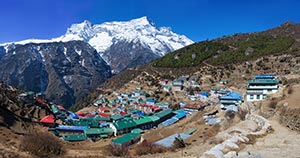
Unless you are an active trekker or possess other ambitions pertaining to the Himalayas, you can make do with $A 20 each day and that too without foregoing your comfort. This is the kind of dollar disparity between developed and the developing nations.
For $A 700, you can enjoy housing, private room and private bathroom. This includes the facility of hot water as demanded. Also included is an array of gastronomic food prepared from fresh spices and organically grown vegetables. If you have a suggestion in mind, the staff can well and truly take it up for you. Always delighted to serve! This is one speciality of Nepal which endears the foreign soul. In fact, you won’t be considered an invader in the kitchen even if you enter it at midnight.
Nepal is quite easy on the pocket when it comes to transportation and various rounds of local excursions won’t set you back by much. Medical care cannot be called excellent in comparison to the standards certain western countries or Australia sticks to but because it is a mountainous territory, the locals are experts in offering quick and unique care. Nepal is not by any means a backwoodsmen territory though and even here you will find doctors and their staffs with latex gloves and air filters.
Once, Edmund Hillary was asked what inspired him to climb Mount Everest and he answered, “Because it is there”. Himalaya might be new-fold Mountain but the old world charm it offers at its ‘Everestian’ altitudes is nothing short of magical. Not only is the climate a balm for many maladies picked up in the West and the South but the air and the atmosphere is also a balm for the senses.
Nepal heals. There are however two issues you want to grapple with before making your move. First is the political unrest faced by the country too frequently for one’s comfort and second is the very fact that Nepal lies in a high-seismic territory and any slip in the fault-line causes fracture of earth and subsequently earthquakes of severe proportions.
Even as I say this, I will concede that the risk is well worth it because the place offers one of the best retirement living experiences and that, again, at a very affordable price. Not only are the locals very amicable, they also feel a sense of honour in helping foreigners. Language can be a trouble as large part of the foothill population is not well-versed in the language.
8. Retiring in India
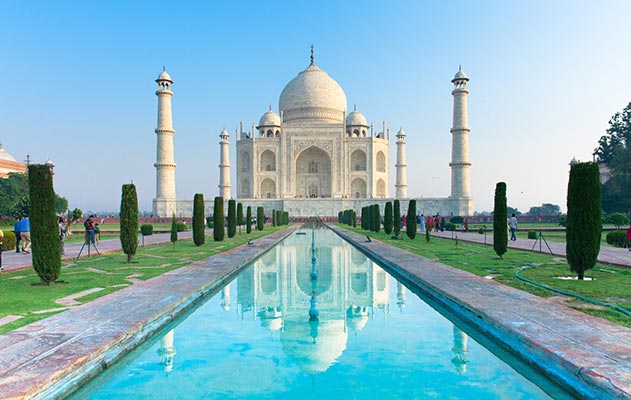 You can rent out a 3 bedroom apartment in New Delhi for $A 554. This is only about 18% of what you would spend in Australia if you have similar goal. The cost of purchasing an apartment near city centre will be $A 1,900 compared to $A 8,520 that it may cost you in Australia (average) per square metre. A retired couple can fetch themselves a comfortable retirement for an annual cost of $A 11,629. This figure is $58,400 for an Australian couple.
You can rent out a 3 bedroom apartment in New Delhi for $A 554. This is only about 18% of what you would spend in Australia if you have similar goal. The cost of purchasing an apartment near city centre will be $A 1,900 compared to $A 8,520 that it may cost you in Australia (average) per square metre. A retired couple can fetch themselves a comfortable retirement for an annual cost of $A 11,629. This figure is $58,400 for an Australian couple.
Australian dollar can travel far in India. On the Cost of Living Comparison Index involving 125 countries, India rests at the bottom of the ladder in the 125th position. Its Consumer Price Index (CPI) is 24.85 whereas Switzerland, the country heading the tally, has a CPI of 124.51. This is more than 5 times difference.
McDonald’s Combo Meal rating also has an interesting stat to suggest. It says that India’s $3.05 price is much closer to the bottom price (Philippines) of $2.56 than it is to the highest price of $13.39 (Switzerland). Though the housing sector across India is multidimensional and prices in major cities like Mumbai and New Delhi can give jitters to any median price calculation, average price of real estate is pretty affordable for those migrating from the Australian shores.
India, like many South East Asian countries controls the extent of foreign ownership of its property market. This said, the incumbent government is all for foreign investment and sees such money-parking as a positive development and not a threat. There is a potential caveat though- Indian visa requirements keep shifting every so often making it difficult for foreigners to make an executable retirement strategy.
India is not the safest country to drive in; what with road fatalities being among the highest across the globe and instances of road rage being pretty frequent. It is advisable to hire local drivers who can navigate through the Indian roads. If you think this can be an expensive plan, don’t be unduly worried. India’s cost-of-living is extremely easy-going and cost of hiring a taxi is only about 70 cents for the first mile and 40 cents for the mile next and further on.
Indian culture

Immigration regulations are not the most relaxed and unless you are related to an Indian citizen by birth, you may find it difficult to shove your way through. All this said, the Indian landscape is perhaps the most diverse and versatile across the planet. It is said that there are hundreds of mini-India’s within the physical framework of the country. The language spoken in the south is quite different from the north. The dialect has nothing in common between the west and the east and yet there is a language of love which transcends all borders and language deficits.
Those retiring overseas to India will be quick to tell you that India embraces all. It has a cosmopolitan flavour. It is among those rare countries where the past sits beautifully with the present and actually blends in absolute harmony. So, as a renowned Australian writer, Gregory David Roberts, points out, it is not unthinkable to see a bullock cart with a Mercedes on the Indian roads (a true reflection of the industrial and the agricultural dichotomy).
Much of India can be a rewarding experience for Australian expats settling down post retirement in its warm embrace. Even geographically, the region is very diverse. There are mountains, seas, plain, and plateaus. Winters can be very harsh in the North and summer can really hurt in the South. What won’t hurt you for sure is the voice of the country which says, “I am walking with you even when you do not hear my footsteps”.
Conducting Due Diligence is crucial
 We have spoken enough about why Asia may suit your needs. Let us wrap this segment by talking about certain issues you need to ponder over before making a move. Call it Due Diligence.
We have spoken enough about why Asia may suit your needs. Let us wrap this segment by talking about certain issues you need to ponder over before making a move. Call it Due Diligence.
The need to plan your taxes can never be overstated. Each country has a definite style of maintaining its taxation. Some are easy on it while others very stringent. Not talking to your attorney and your tax specialist can hurt you on a latter day and this is that one particular threat I had talked about in the beginning.
Medical care
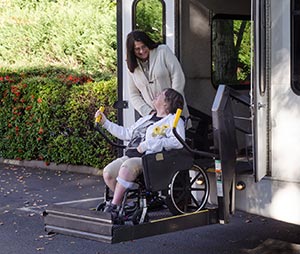
Today, we are a lot more familiar with the internet. This has facilitated research. On the website of Australian embassies, you will find elaborate information on Asian retirement alternatives. They clearly state the rules pertaining to long-term residence in every Asian country and talks about the rights of expats. Further, there are many notable blog posts which can give you a first-hand account of such places.
To boost your prospects further, you can make a visit of a month or two to the country of your choice. If, for some reason, it fails to appeal to you, you can extend your visit by another month and visit another country. May be you will find your heart more closely bound to Vietnam than it has been to Thailand (or vice versa). The cost of living will only marginally vary for the 8 countries I have talked about (Yes, Nepal is incredibly cheaper) and hence will cease to be a consideration.
Medical care is almost excellent everywhere and those from whom age has taken away the great benefit of good health can really find this factor very redeeming. However, it is advisable to do optimum research in this area.
Asia ticks almost all the right boxes
It is not hard to decode that no single country will hit all the right boxes. Malaysia has been under the Western radar for long, Thailand is a country of sex-fetishes (a myth), Cambodia can suddenly become war-torn, Vietnam can give in to insurgency, Nepal to earthquakes and India to communal riots. But this said, they can all offer great many bounties to the retirees of Australia, New Zealand, Northern Europe and America.
Infographic: Comparative costs of retiring in Asia
Following is an infographic, showing you at a glance the highlights of cost of living and retiring overseas in each of our 8 profiled countries.



